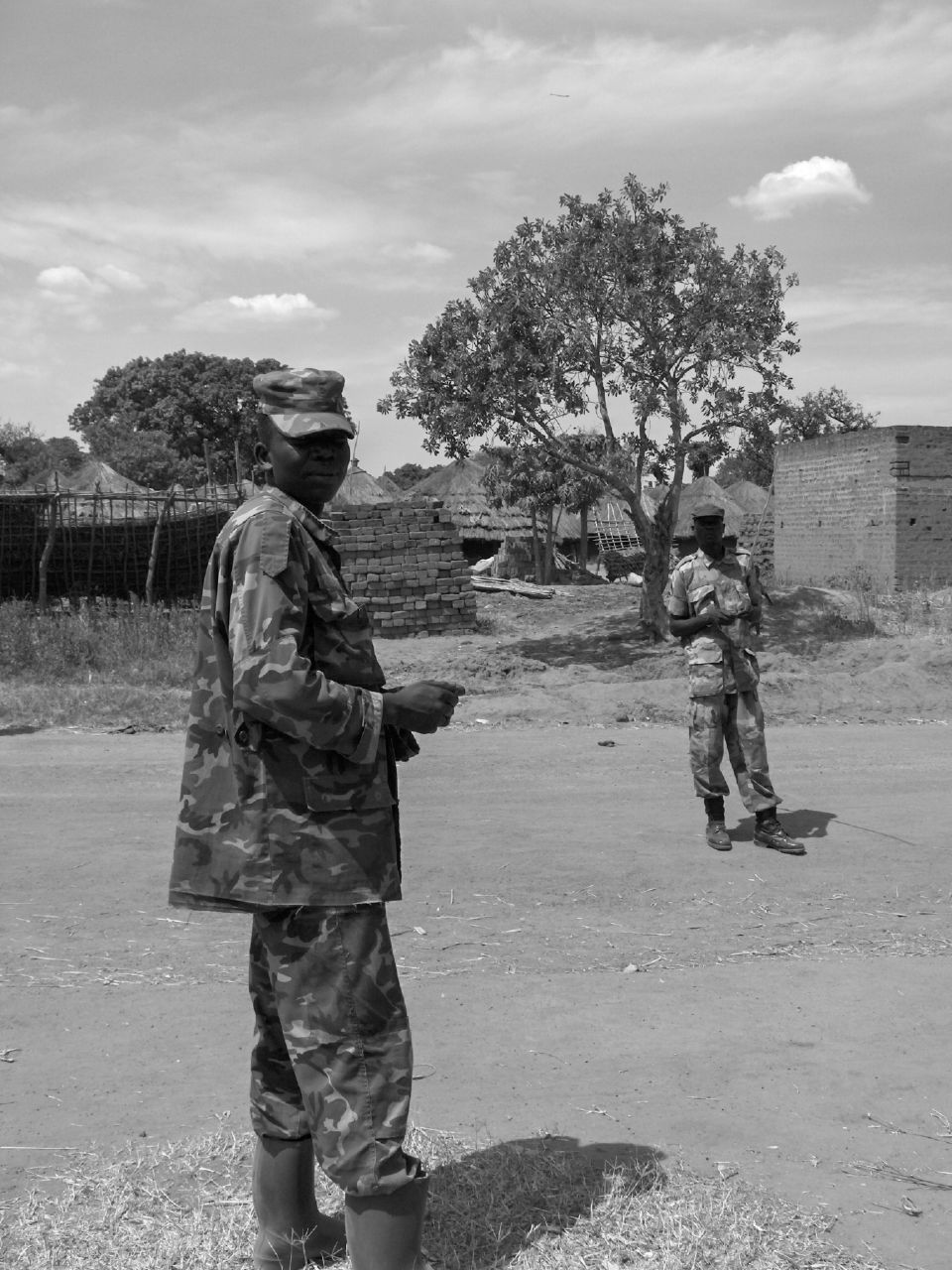A few months back, we reported here at D&D on the crisis surrounding artillery barrages fired by North and South Korean forces into the highly contested maritime zone along the Northern Limit Line (NLL) in the Western Sea.
That escalation has continued, though our coverage of it has not. I have been hesitant to speculate on the swirling crisis around the suspicious sinking of the South Korean Corvette Cheonan on March 26, that claimed the lives of 46 sailors.
I was hesitant, mainly because there was little more than speculation around the causality of the Cheonan's sinking. Tonight, it appears that our wait may be over.
Whispers have been leaking from the South Korean defense establishment all day today, as the South Korean navy raised the sunken half of the Cheonan from the bottom of the Western Sea -- looking for answers.
Yonhap news has begun publishing, and then removing, some of these whispers:
"It is the military intelligence's assessment that the North attacked with a heavy torpedo."Chosun Ibo, a South Korean Daily, has run with the story.
The inference is that the North Koreans have made the first combat-effective use of their rumored suicide torpedo units. The units have been, to this point, mythic -- a boogie man brought out in the debriefings of high-value North Korean defectors, who describe a unit of 13 specially trained special forces members, and modified midget submarines. The Telegraph reports now that sources claim these men were responsible for the sinking of the Cheonan.

(more after the jump)
The Treasury Department finally has an Undersecretary for International Affairs. Lael Brainard, was confirmed yesterday by the full Senate by an overwhelming majority after a wait of more than a year.
Let's take this step-by-step. Brainard was nominated on March 24, 2009. Her nomination was held up by Senate Republicans because of problems with her tax returns, specifically a problem with her "home-office tax deduction." However, Senator Jon Kyl of Arizona was also worried about the expansion of internet gambling. On April 19, 2010 (two days ago), the Senate voted 84-10 for cloture on Brainard's nomination. The next day (yesterday), the Senate voted 78-19 to confirm Brainard.
This is a problem.
I understand that in the US political system, the US Senate's role is to "advice and consent" to the President's nomination. I understand that the minority party must exercise its power in creative ways to foil the efforts of the majority party. I also understand that you have limited options when the opposing party holds the presidency and large majorities in the House and Senate.
But really?
Brainard is nothing if not qualified. Her resume includes Deputy National Economic Advisor for President Bill Clinton; Vice President and Founding Director of the Brookings Institution's Global Economy and Development Program; Associate Professor of Applied Economics at MIT Sloan School; a White House Fellow; and a National Science Foundation Fellow. She isn't crazy, or a criminal. For the record, her husband, Assistant Secretary of State for East Asian and Pacific Affairs Kurt Campbell, was confirmed in June 2009, so the tax issues were not the reason. And finally, when you're confirmed by 78-19, there clearly wasn't that much worry over your nomination.
Thoughts on the LRA from Louisa Seferis,
Demagogues and Dictators Sudan Region Analyst
I'd like to point out 2 things:
Yesterday the Taliban killed the deputy mayor of Kandahar, Azizullah Yarmal. He was apparently was widely regarded as an honest and effective leader, unlike most of his colleagues. As Spencer Ackerman notes, this is clearly a setback to U.S. goals, as after the planned summer offensive in Kandahar providing good governance will require dedicated civil servants like Deputy Mayor Yarmal.
However, there is a silver lining. The method the Taliban used to kill the deputy mayor was quite brutal, even by their standards.
Deputy Mayor Azizullah Yarmal walked into a mosque in central Kandahar, turned toward Mecca and began to pray. As he reached the point where he and the others in the mosque knelt in unison and then bent forward to touch their foreheads to the ground, gunmen made their move, shooting him with a pistol, said Zalmy Ayoubi, a government spokesman.I haven't studied the issue in depth, but my understand is that assassinations in mosques are generally frowned upon. We know the Taliban is borrowing from the U.S. COIN manual, and killing a man while in the act of prayer generally serves to enrage, not please, the local population. This move smacks of desperation. If the Taliban in Kandahar must resort to mosque assassinations, I would hazard a guess that they are back on their heels and struggling to achieve their aims.
It will be interesting to follow reports from the area and see if this event does indeed represent a Taliban overreach, and, much like happened to Zarqawi in Iraq, the violence becomes too much for residents to bear.
AQ Conspiracy theorists rejoice! Abu Omar al Baghdadi is back in the news -- and this time he's dead.
The reports (this time) came in from joint US and Iraqi forces. This week the Obama and al-Maliki governments confirmed the deaths of Abu Ayyub al Masri, the head of AQI, and Abu Omar al Baghdadi, the head of the Islamic State in Iraq -- an AQ affiliate. For those of us AQ watchers, the al Masri elimination has been completely overshadowed by the reports surrounding al Baghdadi. al Masri, you see, at least has been confirmed to possess corporeal form.
Al Baghdadi, on the other hand, has been reported "captured", "killed", and "non existent" multiple times since 2007. There has also been an incisive debate about his hair.
(more after the jump)
Michael Wilkerson over at FP poses a fairly simple question - why can't anyone stop the LRA? - and then fails to satisfactorily answer is own query. The short answer - regional governments are too weak to do anything, and nobody with sufficient resources (read: U.S.) is interested.
Why is the LRA still around? The Ugandan government has been trying to wipe out the group for ages, with some recent support from the United States. The governments of the DRC, South Sudan, and CAR have pitched in, all to no avail.
On top of it, the LRA should, in theory, be quite easy to defeat. It's relatively small -- according to a Ugandan Army spokesperson it has just 200 active fighters. The Enough Project estimates that there are another 800 or so kidnapped civilians on top of that -- two-thirds of which are likely children. The LRA has little firepower -- most of the DRC attacks were committed with blunt weapons like sticks and axes. It has no support from the civilians it preys on. Of course, its leader, the elusive and still at-large Joseph Kony, claims to commune with spirits and have mystical powers. But setting aside the supernatural, how is it possible that the LRA -- with no support base or weaponry -- is still thriving?
 First of all, Wilkerson overplays the role of the U.S. Yes, in recent years, the America military has provided some intel and perhaps even a bit of training for the Ugandan Army. It's a nice PR gesture and an attempt to highlight the "good neighbor" aspects of the newly established AFRICOM. But that token support has been extremely limited, and there's only so much help AFRICOM can provide to Ugandan forces operating far outside their own country. If the U.S. was seriously committed to killing or capturing Kony, and provided a fraction of the resources going to Afghanistan, the LRA would no longer exist.
First of all, Wilkerson overplays the role of the U.S. Yes, in recent years, the America military has provided some intel and perhaps even a bit of training for the Ugandan Army. It's a nice PR gesture and an attempt to highlight the "good neighbor" aspects of the newly established AFRICOM. But that token support has been extremely limited, and there's only so much help AFRICOM can provide to Ugandan forces operating far outside their own country. If the U.S. was seriously committed to killing or capturing Kony, and provided a fraction of the resources going to Afghanistan, the LRA would no longer exist.Second of all, the notion that "the governments of the DRC, South Sudan, and CAR have pitched in" is laughable. [READ MORE]
Share This! (the gift that keeps on giving)
Latest Analysis
D&D Contributors
The D&D Vault
-
▼
2010
(168)
- 10/17 - 10/24 (2)
- 10/10 - 10/17 (1)
- 09/26 - 10/03 (2)
- 09/19 - 09/26 (2)
- 09/12 - 09/19 (1)
- 08/29 - 09/05 (1)
- 08/22 - 08/29 (2)
- 08/08 - 08/15 (1)
- 08/01 - 08/08 (1)
- 07/25 - 08/01 (2)
- 07/18 - 07/25 (3)
- 07/11 - 07/18 (2)
- 07/04 - 07/11 (5)
- 06/27 - 07/04 (2)
- 06/20 - 06/27 (9)
- 06/13 - 06/20 (3)
- 06/06 - 06/13 (1)
- 05/30 - 06/06 (3)
- 05/23 - 05/30 (1)
- 05/16 - 05/23 (1)
- 05/09 - 05/16 (2)
- 05/02 - 05/09 (2)
- 04/25 - 05/02 (4)
- 04/18 - 04/25 (6)
- 04/11 - 04/18 (8)
- 04/04 - 04/11 (8)
- 03/28 - 04/04 (9)
- 03/21 - 03/28 (5)
- 03/14 - 03/21 (2)
- 03/07 - 03/14 (5)
- 02/28 - 03/07 (8)
- 02/21 - 02/28 (8)
- 02/14 - 02/21 (10)
- 02/07 - 02/14 (13)
- 01/31 - 02/07 (8)
- 01/24 - 01/31 (11)
- 01/17 - 01/24 (8)
- 01/10 - 01/17 (6)



.jpg)